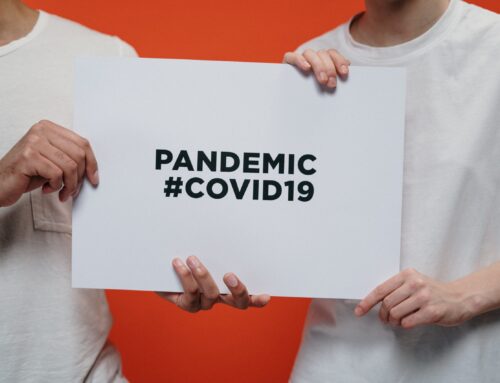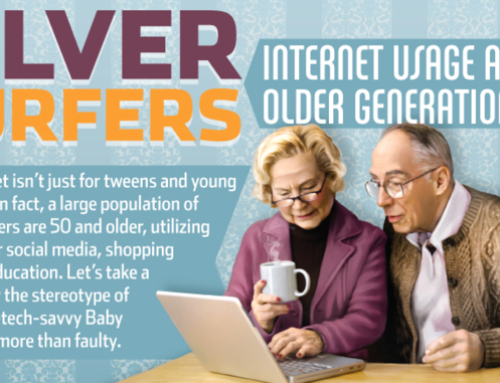So you have a business and you know you need to be online. You may even have a website but it’s not appearing on the first page of Google. You know you need help, but you don’t know the difference between PPC, SEO, SEM or SMM. Seriously, what’s with all the acronyms in this industry?!
When I’m confused about a subject (financial planning, taxes, anything related to insurance) I have a phrase I use with the professional I’m working with. It goes like this: “Don’t worry about insulting my intelligence. Explain it to me like I’m a third grader.” And that usually works. I get high level, brief and simple definitions of what they’re trying to explain. Do I get a FULL understanding of the subject? No. But that’s why I’ve hired them, right? I know all about SEO and backlinks. I don’t need to understand everything!
Neither do you. You probably found this blog because you’re new to internet marketing and want to either do it yourself or hire someone, but don’t even know what questions to ask.
So here are over 50 internet marketing terms defined with brief, simple definitions. This ought to get you started. For fuller, more complex explanations of these subjects, read more articles on my blog, just Google ‘em or look ‘em up on Wikipedia. I’m sure I’ve missed some important terms here, but I couldn’t just keep writing forever! If you have one you’d like defined or you’d like to add to this list, feel free to do so in the comments section.

Onsite Optimization: Things you can do to your website to make it more likeable to search engines. This may include adding a site map, having a clean URL structures, improving load speed, adding content.
Offsite Optimization: Basically, link building. Google counts links from other sites like votes for your site. If you have the best backlinks, your site will outrank your competition. This is called offsite optimization because it doesn’t happen on your website. It takes place on other peoples’ web sites.
Spider or ‘Bot (short for robot): A program written to crawl the web, gather information, and report what it finds back to search engines.
PageRank: Named after Google founder, Larry Page, PageRank refers to how much Google trusts a website based on its backlink profile.
Link Juice: Slang term that refers to the “juice” passed to a website by the incoming links. A site with more link juice would outrank its completion.
Link Building: The process of getting other website publishers to place a link on their site that points back to yours.

Backlink Profile: All of the links pointing to your site.
Anchor Text: The actual words used in a link. Example: Internet Marketing Education is the anchor text for a link to www.davidmcbee.com. This can serve as a signal to the search engines, telling them what the linked site is about.
Over Optimized Anchor Text: When too many of your links use KWs as anchors.
Branded Anchor Text: Your Business name or URL used as the anchor. Example: DavidMcBee.com
Forum: A site where users can join and communicate with each other on given subjects.
Forum Link: A backlink placed in a forum.
Blog: Short for “web log”. Used on websites to showcase articles and information about one’s products and services. Blogs are a great way to keep customers informed and encourage feedback from readers.
Blog Comment Link: A backlink placed in a blog reader’s comment. Note: Several programs exist to mimic this action and create a lot of spam for the sole purpose of procuring backlinks.
Guest Blog Article: Article published on a blog by a guest author.
Webmaster Outreach: The act of contacting webmasters and requesting a backlink to your site.
Web 2.0 Properties: Sites like wordpress, blogger and squidoo, that allow people to post free content and create hub pages.
Link Wheel: A complex way of building/acquiring links that not only point to your main site, but also to each other.
Layering: The practice of building/acquiring links in layers. Example: You build five Web 2.0 properties with links to your site. You then build links to those page. That’s one layer. You can also build links to the third layer links. This disguises your backlink profile from your competitors.
Link Bait: A video, image, infographic, blog article or other piece of interesting or controversial content created in the hopes that other sites will link to it.
Reciprocal Link: the practice of trading links with another website. Mostly considered to be worthless for passing link juice/PageRank.
Infographic: A collection of data and information displayed in an interesting way using images and graphic design.
Infographic distribution: The act of getting websites to place your infographic on their site with a backlink to your infographic.
Link Spam: Artificially created links built for the sole purpose of manipulating PageRank.
Algorithm: The mathematical equation that determines what websites rank higher than others.

Penguin: Another Google update from May of 2012. Penguin looked at over optimization of websites.
PPC – Pay Per Click: You may bid on keywords on search engines, write ads to appear and you will be charged a fee each time a person clicks on your ads.
AdWords: Google’s Pay Per Click system.
The Content Network: This is another place your pay per click ads can appear. These are sites posted by independent publishers whom Google has agreed to pay when people click your ads on their sites.
CPC – Cost per click: How much each click costs.
CPM – Cost per impression: How much it costs for your ad to appear.
Bounce Rate: Percentage of visitors who click on your page, but leave before visiting other pages of your site.
CTR – Click Through Rate: Number of clicks divided by number of impressions.
Impression: When your ad appears. On Google, this may be your AdWords ad appearing on a search. It can also refer to a display ad appearing on a network site.
KW – Keyword: The word or phrase that you bid on in a PPC campaign or optimize for in an SEO campaign.
Keyword Density: How often a keyword appears on a page. A density of 10% or higher (keyword appears ten+ times for every 100 words) looks over optimized.
Money Phrase: A competitive KW that is very generic such as “real estate” or “personal injury attorney”.
Long Tail Keyword: Describes a KW that is typically three or more words. These KWs often bring better visitors, closer to a buying decision and can cost a lot less than a money phrase. Example: “family law attorney Cincinnati Ohio”
Match Types: Determine how your PPC KW may appear on a search. These include Phrase, Broad, Exact and Negative. [read more]
Negative KW: A word you do not want to appear for. Example: Free Website Design (for someone who charges for website design).

Social Media Sites: Twitter, Facebook, LinkedIn, Google+ or any site that encourages social interaction between members.
SSM – Social Media Marketing (or Management): The act of managing a business’s social media strategies.
Facebook: I’m not seriously going to define Facebook. I know you know what it is. 🙂
Twitter: Twitter is like a miniature blog that allows you to post in 140 character statements. You can also follow other users and even search the “twitter-verse” for keywords to see what other twitter users are saying on the subject.
LinkedIn: The largest professional networking social media site.
Google+: Google’s social network.
News Feed: The stories and comments users see on their Facebook wall, their twitter stream, their Google+ page, etc.
Edgerank: The algorithm used by Facebook to determine what stories appear in users’ news feeds.
SEM – Search Engine Marketing: The use of SEO and/or PPC to improve ranking on search engines either in the organic or paid listings.
Well, I hope you find these helpful, if not too simple. At the very least, I’ve packed my blog with a bunch of great keywords that will hopefully improve my own search engine optimization strategies. Mwa ha ha ha ha!!!
So… like I said, I’ve likely missed some phrases so please don’t hesitate to add to this post. I’m eager to learn too!
Thanks for reading.
David


